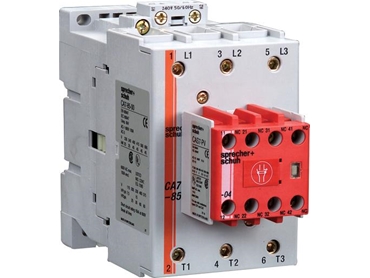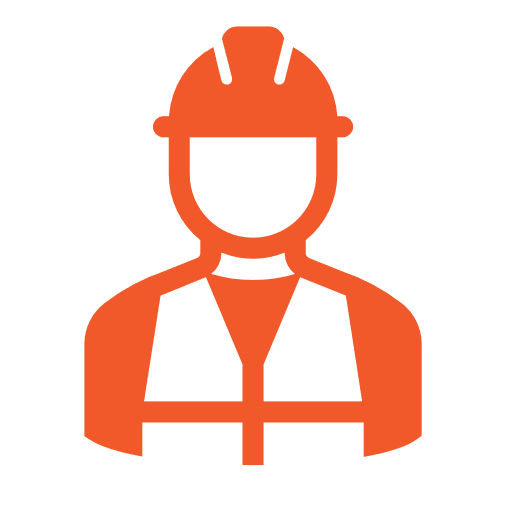
13
Safety Automation: Safety Contactor Vs Standard Contactor
Safety Automation: Safety Contactor vs. Standard Contactor
In industrial automation, safety takes precedence to protect lives and processes. Understanding the nuances between safety contactors and standard contactors is crucial in ensuring the utmost safety and reliability. In this blog post, we’ll delve into the key distinctions and applications of safety contactors and standard contactors, emphasizing safety automation and design principles.
In industrial automation, ensuring the safety of machinery and personnel is paramount. One critical component in this landscape is the Safety Contactor, which differs significantly from a standard contactor in its design and functionality. Unlike traditional automation contactors, safety-enhanced contactors are specifically engineered to meet stringent safety standards, providing fail-safe operation in emergency stop scenarios and controlled shutdowns.
The CAS Contactor series is an excellent example of a high-reliability solution, ensuring that circuits are de-energized safely in case of faults. These contactors are commonly used in safety-critical applications, such as emergency stop circuits and redundant control systems, where failure is not an option. Similarly, Sprecher Schuh Contactors offer robust performance, adhering to strict safety automation guidelines.
When designing an automated safety system, selecting the right type of contactor is crucial to compliance and risk mitigation. Whether implementing a safety-enhanced contactor for emergency power-off applications or an automation contactor for standard operations, understanding their key distinctions ensures a more reliable and secure industrial environment.
Understanding Safety Automation
Safety automation forms the foundation of industrial operations, integrating specialized tools such as safety contactors to minimize hazards and safeguard the well-being of employees. Incorporating safety design principles is essential in crafting resilient safety automation systems.
Standard Contactors: Versatile, Yet Not for Safety Automation
1. Purpose and Function:
Standard contactors serve many applications but are not tailored for safety automation. They excel in controlling electrical circuits across industries but lack the specialized safety features found in safety contactors.
2. Mechanical Linked Contacts:
Standard contactors may or may not have mechanically linked contacts, making them less suitable for safety-critical applications.
3. Manual Operation Prevention:
Normal contactors often allow manual operation from the front of the device, which is convenient for standard control tasks but poses safety risks in critical scenarios.
4. Auxiliary Contacts:
Auxiliary contacts in standard contactors may have a different level of secure fixing, increasing susceptibility to detachment.
Safety Contactors: The Guardians of Safety Automation
1. Purpose and Function:
Safety contactors are purpose-built for safety automation, where lives and processes hang in the balance. Their primary function is to enable rapid and secure shutdown or isolation of machinery and procedures during emergencies.
2. Mechanical Linked Contacts:
A hallmark feature of safety contactors is their mechanically linked contacts. These contacts act as a cohesive unit, closing or opening in unison to ensure a fail-safe open state in case of a failure. This critical safety feature aligns with stringent safety design principles.

Safety Contactor
3. Manual Operation Prevention:
Safety contactors are engineered to prevent manual operation from the front of the device, reducing the risk of accidental actions that could trigger unsafe conditions. This aligns with safety design principles aiming to prevent unexpected start-ups.
4. Securely Fixed Auxiliary Contacts:
Auxiliary contacts in safety contactors are securely affixed to the device, deterring detachment due to environmental factors or tampering. This enhances the overall reliability of safety automation systems.
5. Reliability Data:
Safety contactors provide reliability data, typically in the form of a B10d value. This data is indispensable for evaluating the reliability of safety automation systems, adhering to safety design principles.
6. Positively Driven Contacts (EN 60947-5-1, Annex L):
Definition: Positively driven contact elements in accordance with EN 60947-5-1, Annex L, are a combination of n NO contacts and NC contacts whose construction prevents their simultaneous closing.
Application: These contact elements are primarily used in contactor relays.
Verification Tests: Tests are defined to verify the positively driven contactor relay contacts’ characteristics.
Characteristics: These characteristics ensure that NO and NC contacts in a contactor relay cannot close at the same time, which is crucial in applications where safety or proper sequence of operations is critical.
7. Mirror Contacts (EN 60947-4-1, Annex F):
Definition: A mirror contact in accordance with EN 60947-4-1, Annex F, is an auxiliary NC contact which cannot be closed simultaneously with an NO main contact.
Application: These mirror contacts are primarily used in power contactors.
Verification Tests: Tests are defined to verify the mirror contact characteristics.
Characteristics: Mirror contacts ensure that the NC auxiliary contacts do not close when the NO main contacts are closed, which can be essential in power control applications.
Choosing the Right Contactor for Your Safety Design:
Selecting between safety contactors and standard contactors hinges on your application’s nature:
Safety Contactors: These are indispensable in safety automation when safeguarding lives and critical processes is paramount. They are integral to environments where human well-being and process integrity are at risk.
Standard Contactors: Ideal for general control tasks, standard contactors are versatile and dependable in standard industrial and commercial settings.
In conclusion, safety automation and design principles are the bedrock of industrial processes. Safety contactors, purpose-built for safety automation, are pivotal in ensuring worker safety and process reliability. While dependable for general applications, standard contactors lack the specialized safety features necessary for safety automation.
Enhancing Your Safety System Beyond the Contactor
While safety contactors are essential for enabling safe machine shutdowns, they form just one part of a complete safety architecture. To ensure a truly resilient and compliant safety system, it’s equally important to integrate robust monitoring and output devices that respond effectively to detected hazards.
A key component in modern safety systems is the safety PLC. These programmable devices allow custom safety logic, with flexible input/output terminal assignments. Venus Automation offers a variety of models, including the MOSAIC PLC from Reer, Samos PLC from Wieland, and GEMNIS PLC from Pizzato—each delivering advanced and reliable safety functionality.
Where complex programmability is unnecessary, alternative options such as the safety relay range are available. This includes standalone relays, time-delay relay, speed-monitoring relay, standstill monitoring and timer, PCB relay, relay expansion modules, and control relays like the emergency stop relay, safety edge relay, light curtains relay, and two-hand control relay. These options provide effective and application-specific safety responses.
Essential manual inputs such as the emergency stop remain integral to any safety architecture, despite lacking an automatic safety input. Venus Automation supplies complete solutions including emergency stop accessories, pushbuttons, two-hand stops, and specialized devices like the rope pull emergency stop. For modern installations, wireless safety systems, including wireless emergency stop units, remote controls and accessories, are also available.
Critical integration elements such as contact blocks are supplied to ensure seamless circuit connections. Additional safety monitoring components include the safety encoder, which monitors motor speed, and interlock devices such as tongue solenoid interlock switch and electro-magnetic switches. For more complex safety guarding, multifunctional gatebox units provide a consolidated interface, easily mounted on protective enclosures like concertina guards.
Access restriction and control can also be achieved through electronic key systems, ensuring machinery operates only under authorized conditions. Finally, for output-side protection, safety contactors and pneumatic safety valve solutions are available to ensure reliable machine stoppage when hazardous conditions are detected.
